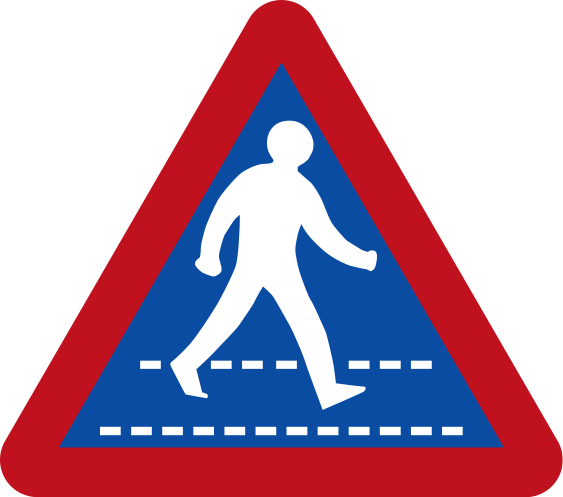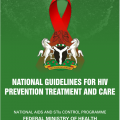A pedestrian is a person travelling on foot, whether walking or running. In some communities, those travelling using tiny wheels such as roller skates, skateboards, and scooters, as well as wheelchair users are also included as pedestrians. Pedestrian safety is an important component of efforts to prevent road traffic injuries. Pedestrian collisions, like other road traffic crashes, should not be accepted as inevitable because they are both predictable and preventable. An estimated 6,227 pedestrians were killed in 2018, an increase of 250 from 2017, according to the Governors Highway Safety Association. Pedestrian fatalities in the U.S. have increased 41 percent since 2008 and now account for 16 percent of all traffic fatalities. In Nigeria the national bureau of statistics reported that 1, 292 people died in road accident in the first quarter of 2018 many of them pedestrians from hit and run accidents .
In order to prevent avoidable loss of lives, drivers must give way to pedestrians crossing the road into which their vehicles are turning. You must also give way to pedestrians if there is a danger of colliding with them, even if there is no marked pedestrian crossing. The following are safety guidelines for pedestrians:
1) Whenever a sidewalk or footpath abuts on the roadway of a public road, a pedestrian shall not walk on such roadway except for the purpose of crossing from one side of such roadway to the other or for some other sufficient reason.
2) A pedestrian on a public road which has no sidewalk or footpath abutting on the roadway, shall walk as near as is practicable to the edge of the roadway on his or her right-hand side so as to face oncoming traffic on such roadway, except where the presence of pedestrians on the roadway is prohibited by a prescribed road traffic sign.
3) No pedestrian shall cross a public road without satisfying himself or herself that the roadway is sufficiently free from oncoming traffic to permit him or her to cross the road in safety.
4) A pedestrian, when crossing a public road by means of a pedestrian crossing or in any other manner, shall not linger on such road but shall proceed with due despatch.
5) No pedestrian on a public road shall conduct himself or herself in such a manner as to or as is likely to constitute a source of danger to himself or herself or to other traffic which is or may be on such road.
6) A pedestrian may cross a public road only at a pedestrian crossing or an intersection or at a distance further than 50 metres from such pedestrian crossing or intersection.
Frequently Asked Questions
Should pedestrians wear reflective clothing at night?
Avoid walking in the dark and during bad weather such as snow, ice or fog. … Walk and cross with other pedestrians whenever possible. Listen for engine noises of backing vehicles when you are in a parking lot, near a driveway or crossing mid-block. Wear bright-colored clothing, especially if you walk at night.
Can pedestrians cross on a green light?
If the light is green, does the pedestrian no longer have the right of way? … Drivers must yield if a pedestrian signals their intent to cross, usually by entering the intersection. But some especially treacherous mid-block crosswalks have a red-yellow-green traffic light to stop traffic when a pedestrian wants to cross
When crossing the street pedestrians should?
At an uncontrolled intersection, pedestrians should be careful and watch out for any oncoming traffic. In most states, drivers are required to yield the right-of-way to you within any crosswalk, marked or unmarked. However, do not stop or delay traffic unnecessarily while crossing a street.
Where should pedestrians walk when there is no sidewalk?
Where there are no sidewalks outside of a business or residential district, pedestrians should walk close to the left hand side of the road, facing traffic. This makes them more visible to cars.
Should Pedestrians walk with or against traffic?
If there are sidewalks on either side of the road, it does not matter if you walk with or against traffic since the sidewalk offers you protection from vehicles. But if you are on a road either with or without a shoulder you should always walk against traffic , that is, vehicles should be driving toward you.
Do cars always have to yield to pedestrians?
Vehicles must yield the right of way to pedestrians at plainly marked crosswalks and at intersections where stop signs or flashing red signals are in place. Pedestrians must yield the right-of-way to vehicles when crossing outside of a marked crosswalk or an unmarked crosswalk at an intersection.
How fast do pedestrians walk?
Pedestrians who walk slower than normal, or pedestrians who use wheelchairs, routinely use the crosswalk, a walking speed of less than 1.2 m/s (4.0 ft/s) should be considered in determining the pedestrian clearance times.
Do pedestrians have the right of way without a crosswalk?
Pedestrians do not always have the right of way, but you’re also not allowed to just run them over if they’re in the middle of the street. Pedestrians must yield the right-of-way to vehicles when crossing outside of a marked crosswalk or an unmarked crosswalk at an intersection.
What happens if you hit a pedestrian jaywalking?
If you hit a pedestrian who is jaywalking, you may be held liable for their bodily injury claim. Even if a pedestrian is breaking the law by jaywalking, you can be at fault for hitting that person crossing the street.
Do you have to stop for pedestrians waiting at a crosswalk?
Just remember that pedestrians and bicyclists have the right-of-way at crosswalks and intersections. Give them plenty of time to cross the street. Don’t block the view. It’s illegal to park with 20 feet of a marked or unmarked crosswalk and within 30 feet of a traffic signal, stop sign, or yield sign.
What are three types of pedestrians?
The three types of pedestrians you should pay special attention to while driving are children, mature pedestrians, and runners/joggers.






